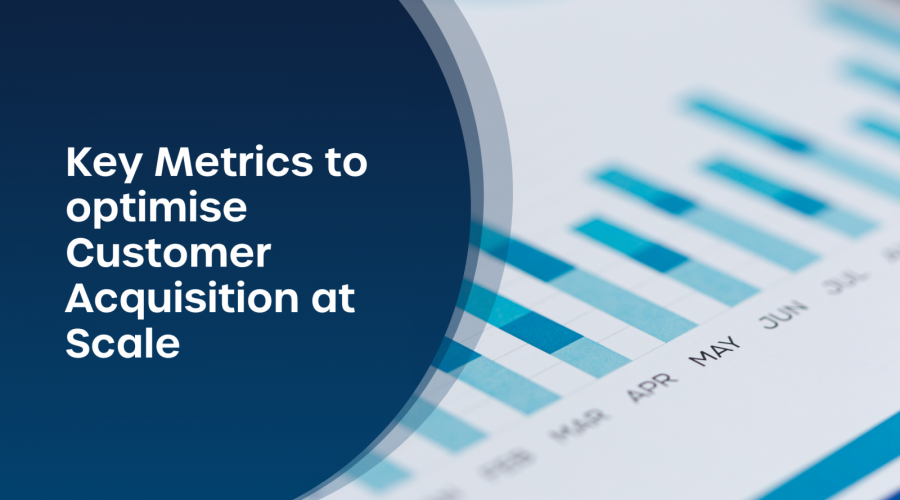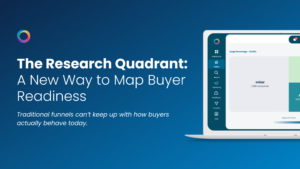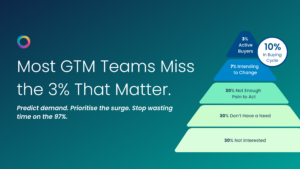It is no secret that today’s buyers are out there looking for the best deals long before they decide to engage with a brand. They are more informed than ever before about the available options, they know what they want and they know how much they are willing to pay for such a solution.
Their research however doesn’t only arm them with valuable information. Data on their digital activities can give your business valuable insight into the buying process and let you analyse the success of your strategy at every stage of the buyer journey.
Here are just some of the key reporting metrics every marketer needs to measure:
Digital Marketing ROI
One of the most important elements of a marketing campaign is to evaluate its performance and impact to determine if marketing activities are actually helping to improve the company’s bottom line.
Your first KPI to track should be your Return on Investment. Not only does it help you measure your success over time it helps you make future business decisions. Knowing your investment’s impact on your business will help you determine whether it is worth it, or if you should reconsider.
You don’t want to spend money on strategies that simply don’t convert. Your digital marketing ROI will guide you and your team on what channels to prioritise, what strategies and tactics to double down on and where to divest.
For each individual channel that you use for your digital marketing, you need to track your spending by channel, cost per deal, cost per lead, cost per sales and the total values that you generate across your different channels.
Email Metrics
Your automated journeys will consist of many steps and each gives you valuable insight into how your prospects are reacting to your campaigns.
When you analyse your email journeys it’s important to take multiple metrics into account:
1. Open Rates
Your open rate is the percentage of subscribers who open a specific email out of your total number of subscribers. Although open rates vary across industries, according to Campaign Monitor, the average rate is 18.5%
2. Click-Through Rates
This metric gives you the percentage of your recipients who click on your specific links. This gives you an idea of how relevant your content is to your subscribers. The higher the rate you can assume the higher the interest in that specific topic.
3. Conversion Rates
A very important metric for measuring the success of your campaign, conversion rates will tell you the percentage of subscribers who complete a goal action after reading your email. This will give you an indication of your ROI.
4. Unsubscribe Rate
Not everything you do will appeal to everyone. While you may get a small number of unsubscribers each time unless it is consistently increasing you don’t need to worry about it. Campaign Monitor found that across all industries the average rate of unsubscribers was 0.1% in 2020.
If you notice a wave of unsubscribers at a specific stage of your automated email journey, it could signal that there is something wrong, and you should take steps to adjust your strategy.
Ad metrics
Ads are an effective way of staying ahead of your competition and generating both traffic to your site and generating leads for your sales teams. If you invest in creating and executing ad campaigns it is crucial that you do it right.
1. Impressions
Your impression is the number of times your ads have appeared in paid search ads to people or the number of times your ad was displayed on a third-party site. This is very helpful in calculating your brand awareness, however, you need to remember that just because it was displayed, it does not mean that your target audience has seen them.
2. Conversions
Ad conversion rates will indicate the percentage of people who took action when presented with your advert. This action will depend on what your goal is with the specific campaign and is an indicator of the success of your campaign.
3. Clicks
Clicks will tell you how your audience is responding to your campaign. Are they taking any action, do they interact in any way with your ad?
Website Metrics
You want your prospects to visit your website so that they can consume your content, learn about your brand, and make a purchase. Every person arriving on your website is a lead that has the potential to become a customer so you need to know as much as you can about them.
Tracking your website metrics give you insights into who they are, how they landed on your website, what they are looking for and how long they spend on it as well.
1. Bounce Rate
This metric will tell you how many of your website visitors open a specific page on your site and leave immediately, without taking action. This can indicate a range of issues with the page from technical errors, to unappealing designs and anything in between.
2. Session Duration
Session metrics measure the time your visitors actively spend on your site. This insight is a great way to determine how engaging your site is, the more clicks your website gets, the higher this metric will be.
3. Traffic Source
Knowing where your visitors are coming from will give you valuable insight into which of your campaigns are working best. Tracked links in your email journey, your ads, your individual campaigns, combined with their behaviour on your page can help you build a more accurate customer profile and understand how to target them in the future.
These are but a few of the 130 key metrics you can track with Zymplify.
As the first-ever precision reporting platform on the market, Zymplify gives you a synchronised environment where you can track over 130 essential metrics. Whether you’re an SMO, a Head of Marketing, Head of Sales or CEO, you can simply log in and see at a glance how your business is really performing at any given time and see how your marketing activities do reflect on your different efforts.
You don’t need specialist data analytics knowledge to use the reporting elements of the platform as the user-friendly dashboard lets you customise each aspect of your analysis and automatically generate your reports.
The ability to customise allows you to track the performance metrics that are most important for your industry, in turn allowing you to create reports that are hyper-relevant to your business.
Zymplify’s integrated solutions bring a wealth of benefits to analysing data and provide you with the flexibility to help you build your own Google analytics or data studio.
Book your Free no-obligation demo with a Zymplify team member to talk through what the Zymplify Platform can do for you.




